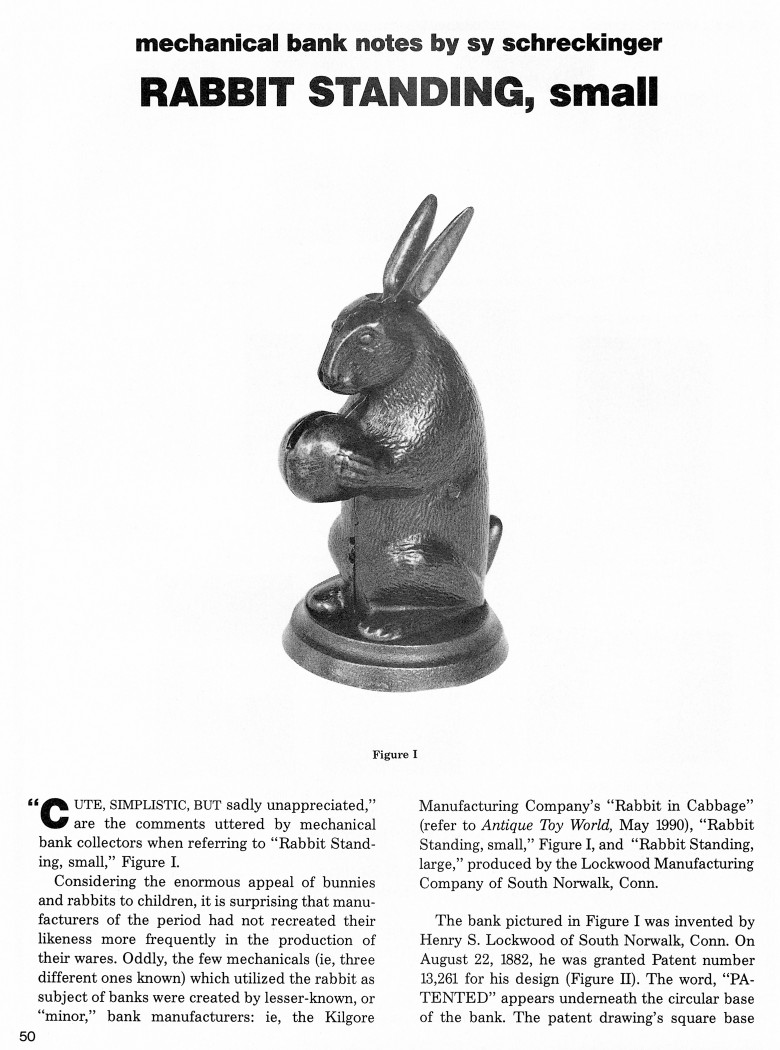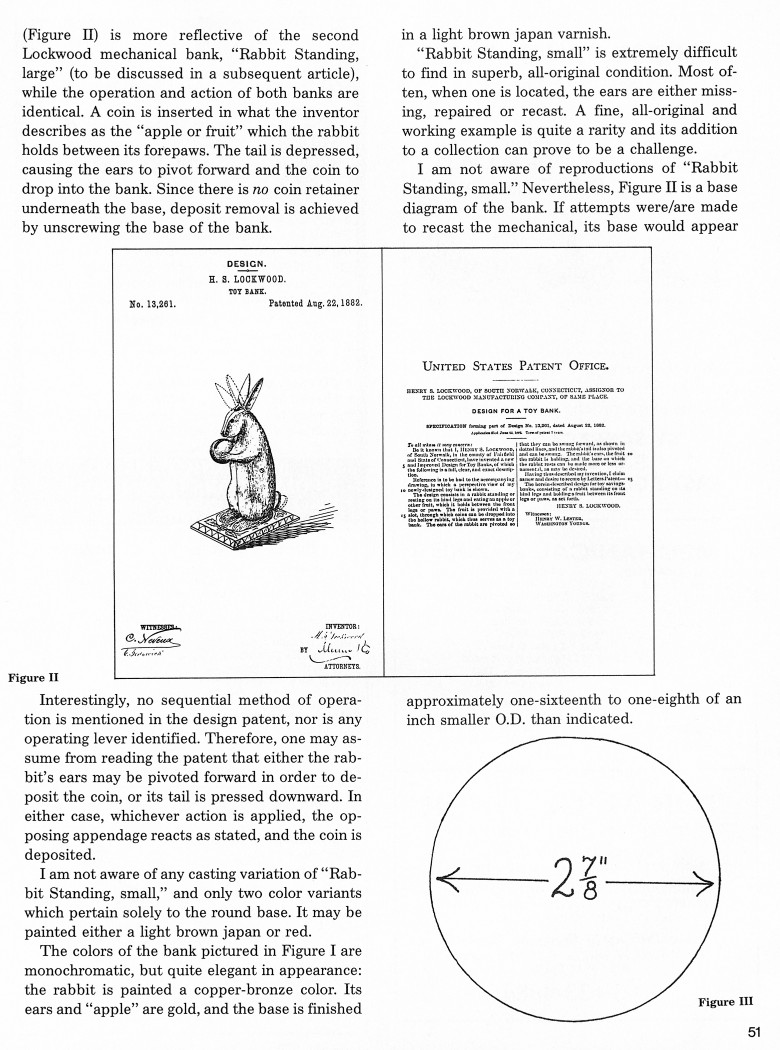|
Rabbit Standing, small
by Sy Schreckinger – ANTIQUE TOY WORLD Magazine – September, 1994
"Cute, simplistic, but sadly unappreciated,"
are the comments uttered by mechanical bank collectors when referring to
"Rabbit Standing, small," Figure I.
Considering the enormous appeal of bunnies and rabbits to children,
it is surprising that manufacturers of the period had not recreated their
likeness more frequently in the production of their wares. Oddly, the few
mechanicals (i.e., three different ones known) which utilized the rabbit as
subject of banks were created by lesser-known, or "minor," bank
manufacturers: i.e., the Kilgore Manufacturing Company's "Rabbit in Cabbage"
(refer to Antique Toy World,
May 1990), "Rabbit Standing, small," Figure
I, and "Rabbit Standing, large," produced by the Lockwood Manufacturing
Company of South Norwalk, Conn.
The bank pictured in Figure I was invented by Henry S. Lockwood of
South Norwalk, Conn. On August 22, 1882, he was granted Patent number
13,261 for his design (Figure II). The word, "PATENTED" appears underneath
the circular base of the bank. The patent drawing's square base (Figure
II) is more reflective of the second Lockwood mechanical bank, "Rabbit
Standing, large" (to be discussed in a subsequent article), while the
operation and action of both banks are identical. A coin is inserted in
what the inventor describes as the "apple or fruit" which the rabbit holds
between its forepaws. The tail is depressed, causing the ears to pivot
forward and the coin to drop into the bank. Since there is no coin
retainer underneath the base, deposit removal is achieved by unscrewing
the base of the bank.
Interestingly, no sequential method of operation is mentioned in the
design patent, nor is any operating lever identified. Therefore, one may
assume from reading the patent that either the rabbit's ears may be
pivoted forward in order to deposit the coin, or its tail is pressed
downward. In either case, whichever action is applied, the opposing
appendage reacts as stated, and the coin is deposited.
I am not aware of any casting variation of "Rabbit Standing, small,"
and only two color variants which pertain solely to the round base. It may
be painted either a light brown japan or red.
The colors of the bank pictured in Figure I are monochromatic, but
quite elegant in appearance: the rabbit is painted a copper-bronze color.
Its ears and "apple" are gold, and the base is finished in a light brown
japan varnish.
"Rabbit Standing, small" is extremely difficult to find in superb,
all-original condition. Most often, when one is located, the ears are
either missing, repaired or recast. A fine, all-original and working
example is quite a rarity and its addition to a collection can prove to be
a challenge.
I am not aware of reproductions of "Rabbit Standing, small."
Nevertheless, Figure II is a base diagram of the bank. If attempts
were/are made to recast the mechanical, its base would appear
approximately one-sixteenth to one-eighth of an inch smaller O.D. than
indicated.
|

